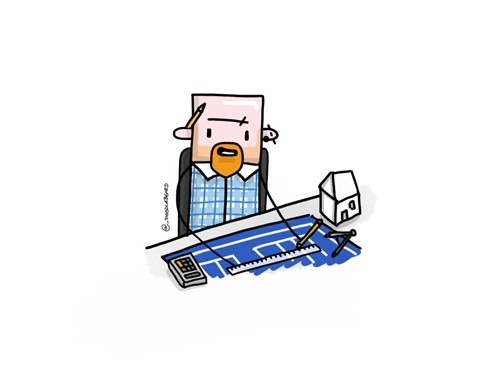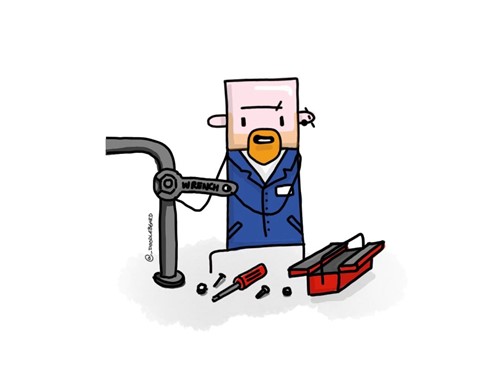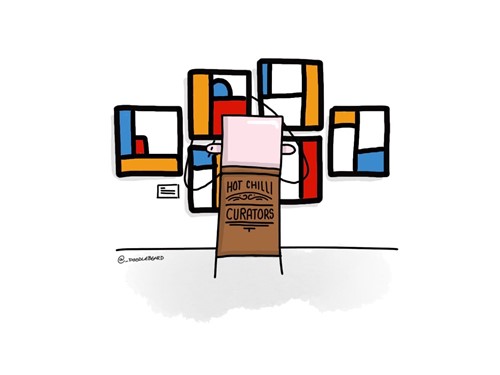Evolution of the Umbraco Developer
Heads Up!
This article is several years old now, and much has happened since then, so please keep that in mind while reading it.
Although it is possible to get started with Umbraco, with zero experience, using various online resources, it is not the easiest CMS to get up and running with if you don't have a development background. Here are an example of some of these online resources:
- Starter Kits,
- Online Video Tutorials (such as the amazing videos by Paul Seal).
- Umbraco TV
In general, however, if you want a website powered by Umbraco you are best off searching for an experienced agency or freelance developer to help you. These agencies/freelancers often refer to themselves as Umbraco Developers and it this term that I am looking to address in this article. To clarify, I’m not saying this term is wrong, but I do believe it to no longer be an accurate or complete description of this role.
Umbraco Developer
A developer is an individual that builds and create software and applications. He or she writes, debugs and executes the source code of a software application.

My Message
To all the Umbraco Developers reading this, I would like to ask you to please stop thinking of yourselves as Umbraco Developers. You are much, much, more than this and I’d like to explain why.
Umbraco prides itself on its editor experience. In part, due to the ease at which Editors can log into the back office of their website and understand how to edit content. It is intuitive, well thought out, and clean. It boasts about the flexibility it offers, providing a wide range of extension points ranging from adding custom property editors and custom dashboards, through to complex custom sections or more. It is also front end agnostic, if you want it to be. Rolling custom controllers to turn your unique build into a headless content provider is completely possible.
This huge amount of flexibility means that you, as a developer, aren’t particularly limited in how you work; but with this flexibility comes great responsibility. And to be an Umbraco Developer, you need to keep this at the forefront of your mind along, with Umbraco’s ethos of “make things simpler”, when working with it. What does this mean? Well, to me it means that as well as being Umbraco Developers, we are also Umbraco Architects.
Umbraco Architect
I want to quote two definitions of the term Architect, both from Lexico.com:
[Noun] A person who is responsible for inventing or realising a particular idea or project.
[Verb] Design and configure (a program or system)

As an Umbraco Architect, it is your responsibility to carefully consider the web project you are working on. Take all the information you are provided with and build a sustainable architecture on top of the Umbraco foundation. This means considering usability, future growth, things your clients aren’t saying but you know they will want, and things they are saying and you know won’t work. It is your responsibility to raise questions, query ideas, and feedback to project managers / account handlers / clients when ever you aren’t sure about things.
So, this is the first reason why I no longer agree with the term Umbraco Developer. For the next reason, I’d like to remind everyone reading this that a “Website is not just for Christmas”! The number of Websites that exist out on the world wide web that are no longer maintained, left to disappear into the ether, is terrifying. Websites, or Web Applications as they are more often these days, need to be cared for; they need nurturing, evolving, and growth encouraged. I appreciate that this also relies on content creators and that side of things is generally out of our hands. But even with regular content updates, websites can become stale. The web is constantly changing, best practice moves on, browsers improve, how visitors consume information is a constantly moving line in the sand. One that we will never reach but should strive for on a daily basis.
So the next term I’d like to visit is Caretaker. We are all, or at least we should be, Umbraco Caretakers.
Umbraco Caretaker
Again the definition is from Lexico.com:
A person employed to look after a building.

In this sense, however, the building is the website. We should be responsible for its maintenance, its regular upgrades, and renovations. We should be working with tenants (content editors) to make small, incremental improvements on a regular basis to expand the desire for visitors to return over and over again. The Umbraco ethos should drive everything we do and remembering the back office experience is critical to this.
So, now we have 3 terms - Developer, Architect, Caretaker.
This is why I think we need something new. Something that can be used to encompass all of these roles and keeping in mind that nothing stays the same, a term whose meaning allows for some flexibility. I present to you:
The Umbraco Curator

Curators, in their nature, are responsible for assembling, cataloguing, managing, presenting, evolving, updating. They present new ideas, learn from trends or generate new trends. They aren’t static, they aren’t happy with the status quo. And that is our responsibility as developers working within the Umbraco ecosystem. We should question, we should improve, and more importantly we should make things simpler. We can be creative and pragmatic, and this will make the lives of others, using our systems, better.
So how do you become an Umbraco Curator? Well, it is all a state of mind in reality. I suspect that most of you already are, and so it is a case of reminding yourself of this. Shout about it, tell people you do more than “just develop websites”. Explain you architect elegant solutions with simplicity in mind.
Now, before I sign off, I’d like to remind everyone reading this that you don’t have to be all of these things; not everyone wants to be and that is okay. I’m not suggesting you rush out immediately to have your business cards reprinted. I only encourage you to think about what you really do, where your responsibilities lie and the ways in which you make life better for the people you work with, and for. Even if only a tiny aspect resonates with you, then I politely suggest that you are already fulfilling the role of curator and I suspect you’ll find you will make small adjustments in how you work, as you consider that. With that small change in perspective, users of your sites may be just that little bit happier.
Graphics kindly created by @_doodlebeard